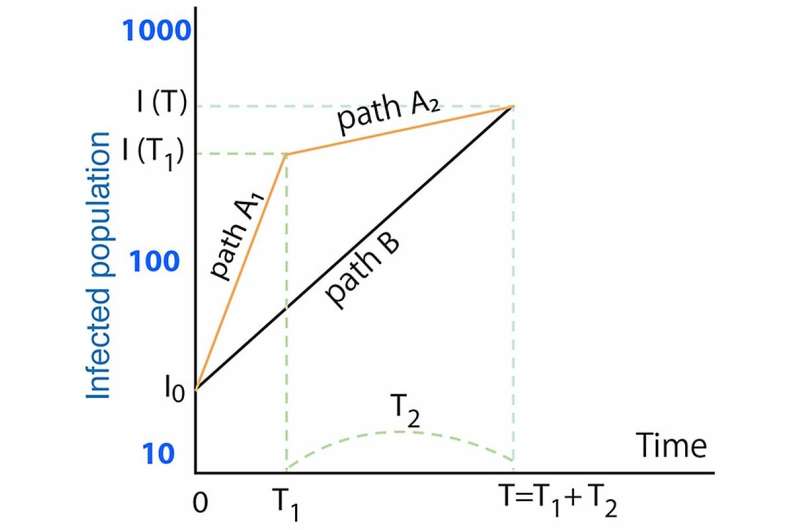b

The COVID-19 pandemic has had, and continues to have, profound impacts on the world. In the early stages of the pandemic, many countries adopted stringent countermeasures to limit the spread of the disease. These included extended lockdowns, particularly when medical care systems were pushed to the brink.
But these measures also had a significant socioeconomic impact, with many losing their jobs and/or reporting an uptick in depression and other negative impacts on their mental health. As such, economists have begun to examine numerically the cost-benefit of such measures. Yet, numbers can only get us so far. Tsuyoshi Hondou, an associate professor at Tohoku University’s Graduate School of Science, has turned to an alternative source for answers: physics.
Hondou’s physics-based analysis determined that embracing early, less severe preventative measures helped slow the spread of disease and lessened economic damage. “We formulated a theoretical framework using methodologies from physics, to gain results unattainable by conventional methods of economics,” said Hondou. “We analytically demonstrated that adopting timely and moderate measurers reconciled the medical effectiveness and economic impact.”
Details of his findings were published in the Journal of the Physical Society of Japan on March 29, 2023.
Physics often employs simple models, where a few elements essential to a system are examined. Despite the simplicity, this form of analysis still provides deep insights and high predictability.
Likewise, Hondou’s framework assumed minimal and common factors pertaining to pandemic regulation and economics. From there, it derived analytical inequalities—mathematical expressions that establish a relationship between two or more variables where one is greater than or less than another—for the medical and economic costs of different countermeasures.
These inequalities showed that small but steady countermeasures slowed the infection rate and limited the economic fallout better than strict countermeasures implemented just before a crisis.
“Our general but robust findings indicate that delaying countermeasures leads to cost increases, and once the infected population climbs more than the population under timely and moderate measurers, the system becomes economically irreversible as additional expenditures begin to snowball,” adds Hondou.
Hondou, however, cautions that the findings are based only on the most essential properties of a pandemic. “Still, our results can serve as a useful basis for considering more realistic situations.”
Tohoku University

